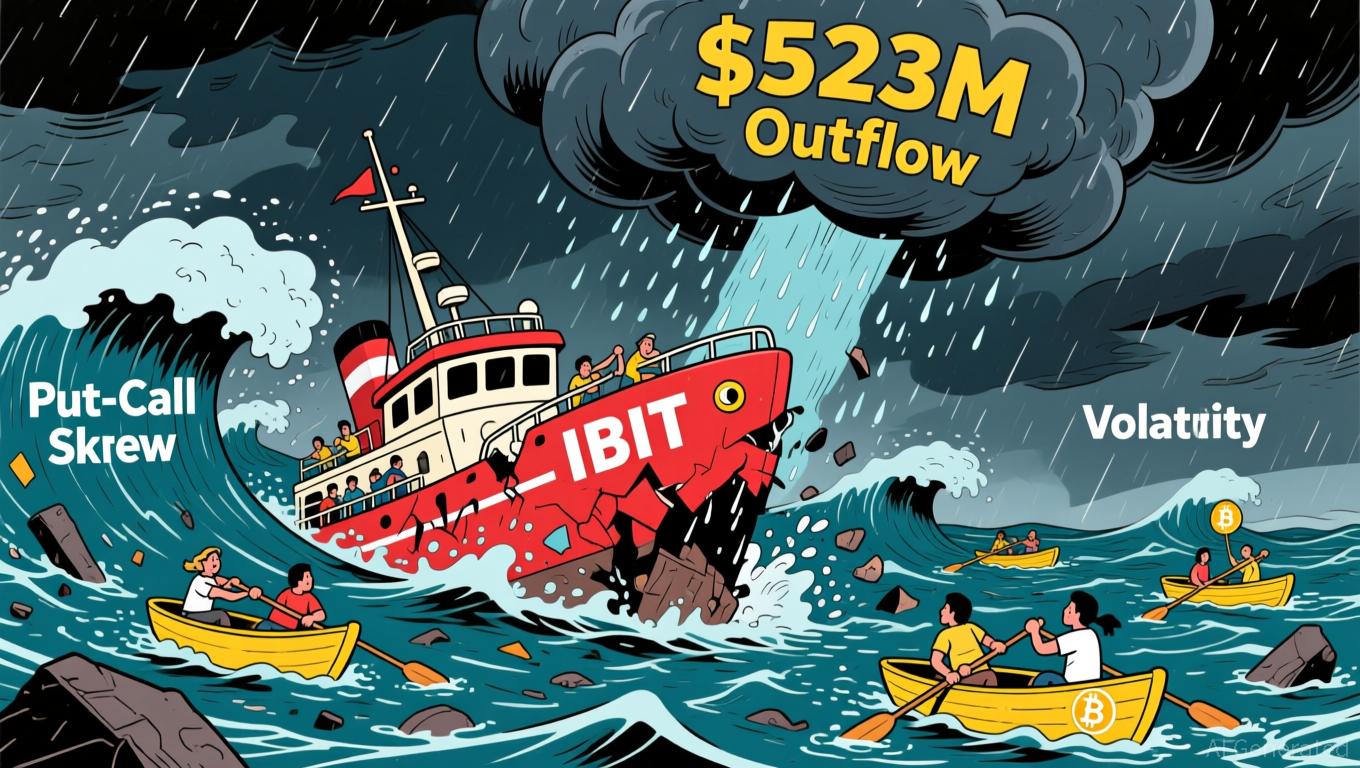Systemic Threats in AI-Powered DeFi Networks: Insights Gained from the ChainOpera AI Token Crash
- ChainOpera AI's 2025 token crash highlighted systemic risks in AI-driven DeFi ecosystems due to centralized governance and unstable algorithms. - Centralized control by ten wallets (87.9% supply) and opaque AI models exacerbated panic selling and liquidity crises. - Unproven algorithms and unaudited smart contracts, combined with regulatory uncertainty, triggered a 96% value drop. - The collapse underscores the need for transparent governance, decentralized structures, and regulatory alignment in AI-powe
Governance Issues: Centralization and Lack of Transparency
One of the main problems within ChainOpera AI’s DeFi system was its heavily centralized governance.
The governance structure was further weakened by vague technical details.
Algorithmic Weaknesses: Untested Models and Smart Contract Risks
ChainOpera AI’s dependence on experimental AI algorithms made its system even more fragile. The breakdown of xUSD and deUSD—stablecoins meant to track the U.S. dollar—
The inability of the project to respond to changing market conditions further highlighted its algorithmic limitations. In contrast to decentralized models that allow communities to make adjustments, ChainOpera AI’s centralized approach prevented it from stabilizing liquidity or updating risk controls. This inflexibility proved disastrous when outside events, such as leadership changes at C3.ai and
Wider Lessons for AI-Driven Crypto Initiatives
The COAI token’s failure highlights the systemic dangers of equating AI innovation with financial reliability. While AI can improve efficiency and forecasting, its use in DeFi must be accompanied by strong safeguards. Key takeaways for investors include:
1. Insist on Openness: Projects should clearly communicate their algorithmic methods, governance systems, and risk management plans.
2. Emphasize Decentralization: Centralized control over tokens and governance introduces critical vulnerabilities.
3. Prepare for Regulation:
Conclusion: Advocating Responsible Innovation
The downfall of the ChainOpera AI token stands as a warning for the AI-DeFi sector. While new technologies offer significant potential, they must be matched with strong risk controls, transparent leadership, and compliance with regulations. Investors should scrutinize AI-based crypto ventures, favoring those that combine innovation with responsible management. As the industry matures, building resilient systems—rather than chasing speculative trends—will be key to lasting success in the next wave of DeFi.
Disclaimer: The content of this article solely reflects the author's opinion and does not represent the platform in any capacity. This article is not intended to serve as a reference for making investment decisions.
You may also like
Bitcoin News Update: Japan's Bond Turmoil Triggers Worldwide Crypto Sell-Off Amid Yen Carry Trade Reversal
- Japan's $135.4B stimulus package triggered a 3.41% surge in 30-year bond yields, destabilizing the $20T yen carry trade and sparking global crypto/stock selloffs. - Rising yields threaten Japan's 230% GDP debt load with higher servicing costs, creating a "debt death spiral" risk as BOJ hesitates to tighten policy. - Forced deleveraging by financial institutions intensified Bitcoin's 26% drop, with Ethereum/XRP/Solana also falling 3-5.6% amid margin calls and capital repatriation. - Upcoming 40-year bond

Bitcoin News Today: Bitcoin ETFs See $523M Outflow as Investors Weigh Fear Against Long-Term Strategies
- BlackRock's IBIT ETF recorded a $1.26B net outflow in Nov 2025, its largest redemption since 2024 launch. - Bitcoin price fell 16% to $52, triggering $2.59B outflows across 11 spot ETFs as bearish options demand surged. - Put-call skew hit 3.1% (7-month high), reflecting heightened pessimism and capitulation pressures in Bitcoin's price action. - Gold ETFs gained $289M as investors sought safe havens, contrasting with $1B inflows to tech/healthcare sector funds. - Year-to-date Bitcoin ETF inflows ($27.4B

YFI Drops 1.7% After Subpar Weekly Results as Edgewater Showcases AI-Powered Wi-Fi at Canada’s Leading Semiconductor Conference
- Edgewater Wireless will showcase AI-powered Wi-Fi 8 solutions at Canada’s premier semiconductor symposium in November 2025. - The company’s CEO will highlight ultra-reliable wireless roadmaps and a $2.4M commercialization initiative supported by $921K in government grants. - Its patented Spectrum Slicing technology claims 10x performance gains and 50% latency reduction, aligning with Canada’s semiconductor self-sufficiency goals. - Despite a 11.85% monthly stock decline, Edgewater positions itself at the

Ethereum Updates Today: Ethereum Transforms into Digital Bonds, Soaring Above $3,000 Driven by Institutional Interest
- Ethereum surged past $3,000 in late 2025 driven by institutional demand, ETF approvals, and technical upgrades like the Fusaka upgrade. - BlackRock's staked Ethereum ETF attracted $13.1B inflows since 2024, reclassifying staked ETH as "digital bonds" for institutional investors. - Over 69 corporations now hold 4.1M ETH in treasuries, but ETF outflows highlight ongoing market differentiation from Bitcoin . - Fusaka's focus on layer-1 scalability aims to redirect economic activity to Ethereum's base layer